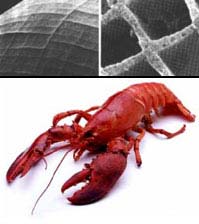 |
|
The Lobster All-Sky X-ray Observatory is under development, designed to have a wide field of view like a lobster. (Image: BBC) |
Lobster has inspired the creation of a new type of X-ray telescope in Europe. This observatory is designed to have an extremely wide field of view—similar to how lobsters use their eyes.
Lobsters achieve this ability through a large network of tiny channels that focus light by reflection, rather than refraction through a lens like in human eyes.
Researchers in the UK are now building a similar structure for a telescope to scan the sky in search of intense and sudden phenomena, such as black holes consuming stars…
 |
|
The design of the telescope is inspired by the visual system of lobsters. (Image: BBC) |
“Astronomy requires you to observe the right spot at the right time, which means either you need to be very lucky or you need to see everywhere at the same time. Our device will use a method to observe all directions simultaneously,” said Dr. Nigel Bannister from the University of Leicester.
The Lobster All-Sky X-ray Observatory is currently in development. It consists of six interconnected modules, providing a 180-degree field of view. If this telescope is launched into orbit around the Earth, it will create a complete picture of the sky.
Lobster will function as a warning system. When it detects an interesting target, it will immediately report back to Earth, calling for other telescopes operating at different wavelengths to monitor this target.
The idea of applying the structure of lobster eyes to X-ray telescopes was first proposed in the 1970s, but it took 30 years to perfect the related optical devices.
T. An


















































